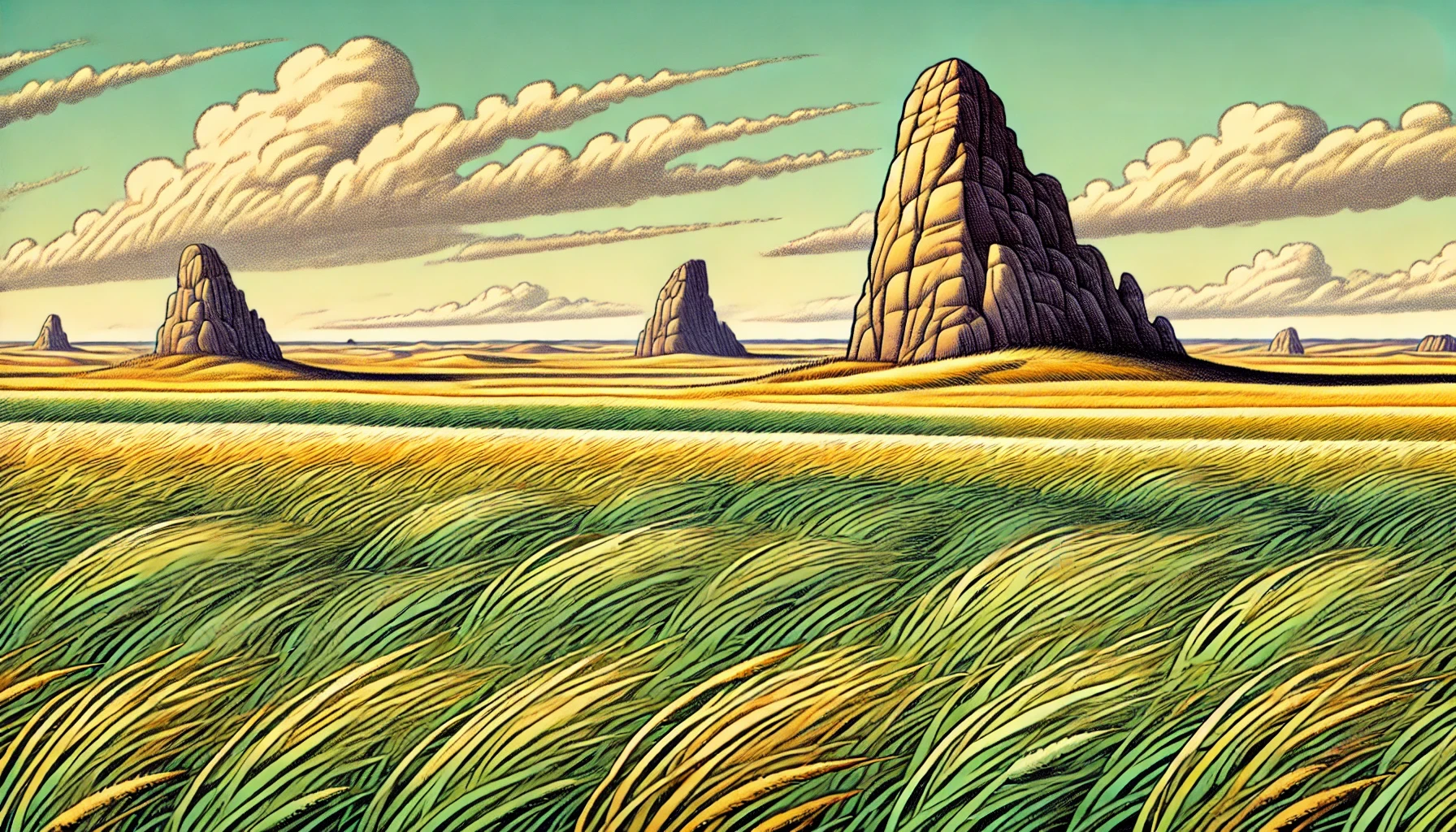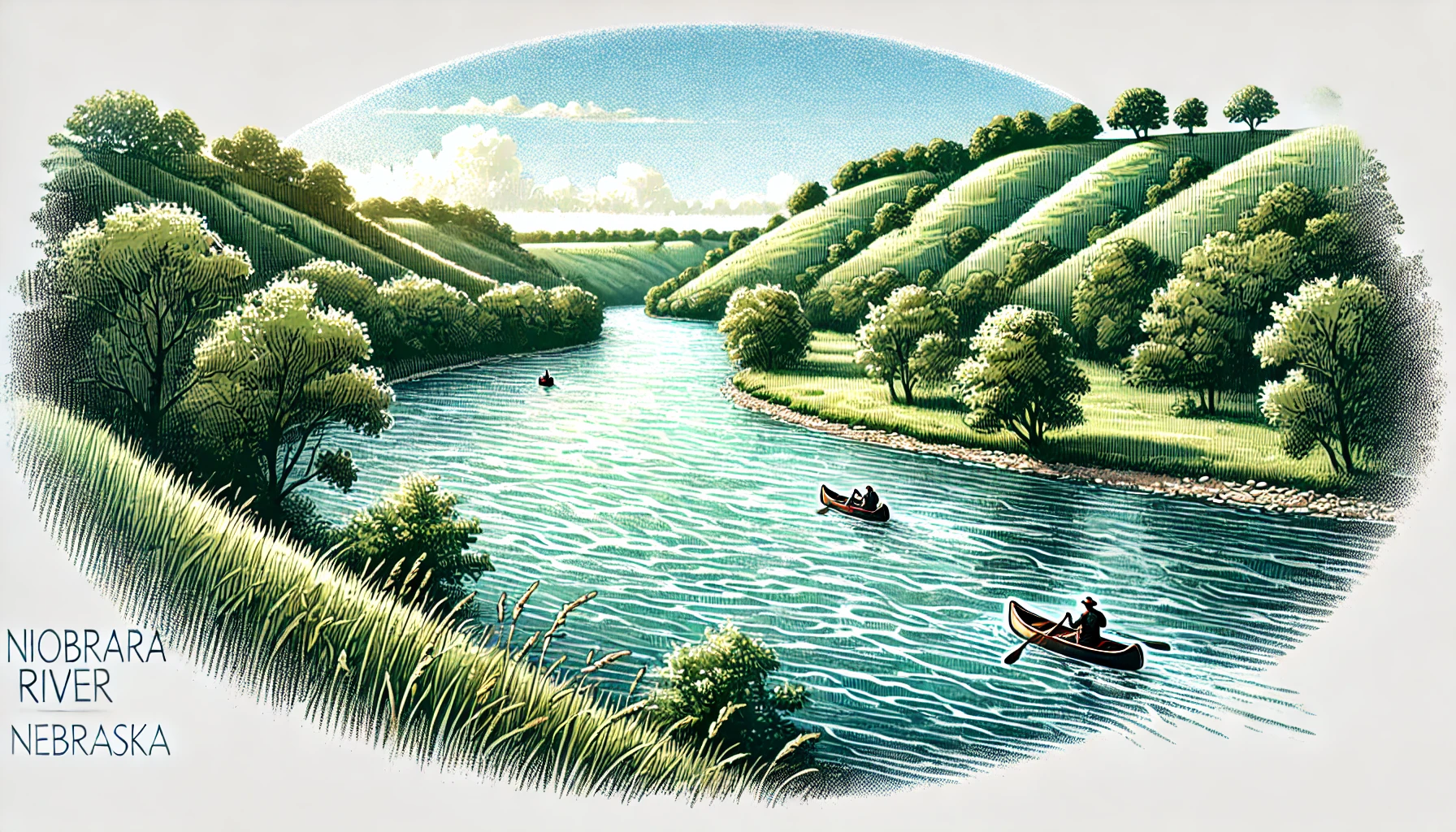Tallgrass Prairie Ecology in Nebraska

Traveling through Nebraska, it becomes apparent that the state is home to a unique and fascinating ecosystem: the tallgrass prairie. Once spanning hundreds of millions of acres, this ecosystem now occupies a mere fraction of its original range. Despite this decline, the tallgrass prairie remains a vital component of Nebraska's natural heritage, providing a glimpse into the state's ecological past. This article delves into the complexities of tallgrass prairie ecology, highlighting key components, processes, and interactions within this ecosystem.
At its core, the tallgrass prairie is characterized by a diverse array of plant species, including big bluestem (Andropogon gerardii), switchgrass (Panicum virgatum), and indiangrass (Sorghastrum nutans). These species form the backbone of the ecosystem, providing habitat and sustenance for a vast array of animal species. The Konza Prairie, located in eastern Kansas but extending into southeastern Nebraska, serves as an exemplary model of tallgrass prairie ecology. This preserve, spanning over 8,600 acres, is one of the largest and most well-studied tracts of tallgrass prairie in the United States.
One of the defining features of tallgrass prairie ecology is the interplay between fire and grazing. Historically, wildfires swept across the prairie, fueled by dry vegetation and ignited by lightning. This process maintained the ecosystem's diversity by promoting the growth of certain plant species and controlling the encroachment of woody vegetation. The Pawnee National Grassland, located in eastern Nebraska, is one of several sites where prescribed burns are conducted to mimic this natural process. Similarly, grazing by herbivores, such as bison (Bison bison), played a crucial role in shaping the prairie ecosystem. The Sandhills region of north-central Nebraska, home to the largest remaining tracts of tallgrass prairie, is still grazed by large herds of cattle.
Tallgrass prairie ecology is also influenced by complex interactions between plant species. For example, mycorrhizal fungi form symbiotic relationships with certain plant species, enhancing nutrient uptake and facilitating communication between individual plants. This "wood wide web" of interconnected plant and fungal networks allows the ecosystem to respond to environmental stressors and maintain its resilience. Research at the University of Nebraska-Lincoln has shed light on these complex interactions, highlighting the importance of considering the ecosystem as a whole, rather than individual components in isolation.
In addition to these ecological processes, the tallgrass prairie is home to a staggering array of animal species. The prairie is a critical stopover for migratory birds, such as the upland sandpiper (Bartramia longicauda) and the bobolink (Dolichonyx oryzivorus), and provides habitat for a variety of iconic prairie species, including the greater prairie chicken (Tympanuchus cupido) and the black-footed ferret (Mustela nigripes). The Nebraska Sandhills are also home to one of the largest remaining populations of the threatened western massasauga rattlesnake (Sistrurus tergeminus).
In conclusion, the tallgrass prairie is a complex, dynamic ecosystem that is shaped by a multitude of ecological processes. Understanding these processes and interactions is crucial for conserving and managing this unique ecosystem. As one travels through Nebraska, the remnants of this once-vast ecosystem can be seen, serving as a poignant reminder of the importance of preserving our natural heritage.
The Tallgrass Prairie is not just an ecosystem, but an intricate web of life that has evolved over thousands of years. As we continue to explore and study this fascinating ecosystem, we can gain a deeper appreciation for the interconnectedness of all living organisms and the importance of preserving the natural world for future generations.
Efforts to preserve and restore the Tallgrass Prairie continue, with organizations and researchers working together to study, manage, and protect this precious ecosystem. As we move forward, it is essential to prioritize preservation and management of the remaining tallgrass prairie, not only for its ecological value but also for its historical and cultural significance.
At its core, the tallgrass prairie is characterized by a diverse array of plant species, including big bluestem (Andropogon gerardii), switchgrass (Panicum virgatum), and indiangrass (Sorghastrum nutans). These species form the backbone of the ecosystem, providing habitat and sustenance for a vast array of animal species. The Konza Prairie, located in eastern Kansas but extending into southeastern Nebraska, serves as an exemplary model of tallgrass prairie ecology. This preserve, spanning over 8,600 acres, is one of the largest and most well-studied tracts of tallgrass prairie in the United States.
One of the defining features of tallgrass prairie ecology is the interplay between fire and grazing. Historically, wildfires swept across the prairie, fueled by dry vegetation and ignited by lightning. This process maintained the ecosystem's diversity by promoting the growth of certain plant species and controlling the encroachment of woody vegetation. The Pawnee National Grassland, located in eastern Nebraska, is one of several sites where prescribed burns are conducted to mimic this natural process. Similarly, grazing by herbivores, such as bison (Bison bison), played a crucial role in shaping the prairie ecosystem. The Sandhills region of north-central Nebraska, home to the largest remaining tracts of tallgrass prairie, is still grazed by large herds of cattle.
Tallgrass prairie ecology is also influenced by complex interactions between plant species. For example, mycorrhizal fungi form symbiotic relationships with certain plant species, enhancing nutrient uptake and facilitating communication between individual plants. This "wood wide web" of interconnected plant and fungal networks allows the ecosystem to respond to environmental stressors and maintain its resilience. Research at the University of Nebraska-Lincoln has shed light on these complex interactions, highlighting the importance of considering the ecosystem as a whole, rather than individual components in isolation.
In addition to these ecological processes, the tallgrass prairie is home to a staggering array of animal species. The prairie is a critical stopover for migratory birds, such as the upland sandpiper (Bartramia longicauda) and the bobolink (Dolichonyx oryzivorus), and provides habitat for a variety of iconic prairie species, including the greater prairie chicken (Tympanuchus cupido) and the black-footed ferret (Mustela nigripes). The Nebraska Sandhills are also home to one of the largest remaining populations of the threatened western massasauga rattlesnake (Sistrurus tergeminus).
In conclusion, the tallgrass prairie is a complex, dynamic ecosystem that is shaped by a multitude of ecological processes. Understanding these processes and interactions is crucial for conserving and managing this unique ecosystem. As one travels through Nebraska, the remnants of this once-vast ecosystem can be seen, serving as a poignant reminder of the importance of preserving our natural heritage.
The Tallgrass Prairie is not just an ecosystem, but an intricate web of life that has evolved over thousands of years. As we continue to explore and study this fascinating ecosystem, we can gain a deeper appreciation for the interconnectedness of all living organisms and the importance of preserving the natural world for future generations.
Efforts to preserve and restore the Tallgrass Prairie continue, with organizations and researchers working together to study, manage, and protect this precious ecosystem. As we move forward, it is essential to prioritize preservation and management of the remaining tallgrass prairie, not only for its ecological value but also for its historical and cultural significance.
